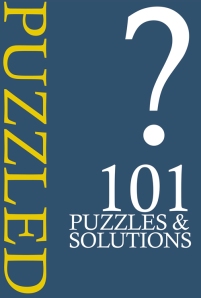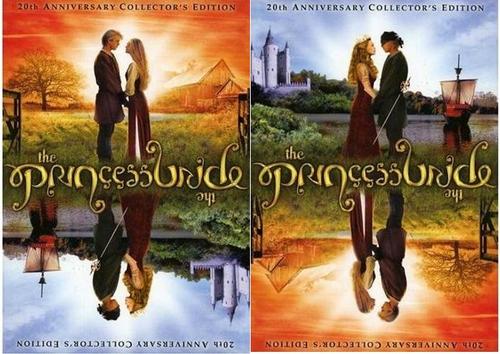 My claim is that the word “footstool” is a palindrome (a word that reads the same backwards and forwards). In what way am I right?
My claim is that the word “footstool” is a palindrome (a word that reads the same backwards and forwards). In what way am I right?
If you have not tried to solve it, have a go now. For everyone else, the answer is after the break.
The solution is that ‘footstool’ is a palindrome ….. in morse code. Did you solve it?
I have produced an ebook containing 101 of the previous Friday Puzzles! It is called PUZZLED and is available for the Kindle (UK here and USA here) and on the iBookstore (UK here in the USA here). You can try 101 of the puzzles for free here.

I thought the answer was “forwards” – in which way (of backwards and forwards) am I right?
I understand there would be hardly any reader of this blog who knows Morse code. In that case, to whom this puzzle was addressed?
Actually i once learned morse code, for an amateur radio licence…
However i did not even considered Morse code, as possible solution –.- — — – … – — — -.–
Ah I did guess that might be it but wasn’t interested enough to go and look it up to check. Prefer puzzles that can be solved with logic/observation.
I knew enough morse code to verify an aspect of the puzzle straight away. I.E. that the codes for S and O are the same forwards as backwards. Surely many people know …/—/…
Ah, I thought it was a palindrome in the sense that when handwritten and rotated 180 degrees, it reads the same. Like punch’.
The US DVD cover for the Princess Bride is an excellent example of this.

The less said about the upcoming remake the better.
That’s what’s known as an ambigram, and pretty much anything can be written that way (although some may be rather eye-straining). Here’s one site which can create them automatically: http://www.flipscript.com/
I knew it, but I actually did write a program using morse code last week.
We have some down time at work, wrote programs to send and receive morse code. Now we have two small computers “talking” to each other over morse.
……. We really are geeks at my workplace.
I know morse code (well I did 20 years ago when I passed an exam in it) and I didn’t have a clue that this might be the answer.
I thought the answer might have been upside down in that that footstool almost looks the same when written upside down. I know it’s not quite right but that was all I had.
I think I read somewhere that the longest morse code palindrome is “intransigence”.
@rmb I see that this puzzle is aimed to the general public, maybe based on “lateral thinking”. There is no need to know morse code, just figure out a way in which the word is written the same backwards.
I tried several ways with binary, didn´t think about morse, but now I realize I was somehow on my way.
Nice one, Richard. I like these kind.
I flipped it 180 degrees and it reads the same. That solution works for me 🙂
f … l … Don’t work! It’s the first I thoguht.
me too, and then i saw the bug..
if, as Matthew Hardy says, S is a palindrome in morse ( —), then surely we can extend the puzzle word and say that FOOTSTOOLS is a palidrome too,
Surely not. To extend it at one end, you would have to do so at the other. And ‘sfootstools’ is not a word.
in a way (or many many ways) ‘rats live on no evil star’ isn’t a palindrome…….when translated to French, Mandarin Chinese, Urdu, Tuareg, Enigma coded, encoded in morse……
In English, ignoring spaces, the longest palindrome in Morse code is INTRANSIGENCE (..-.-.-..- -……- -..-.-.-..).
The Finnish word for “stereo mapping” is even longer with 33 characters: STEREOKARTOITUS (…-..-..—-.-.-.-.—-..-..-…)
Brilliant! 🙂
This is getting silly. Once you say the solution depends on enciphering the word, you have a whole family of solutions, and there’s no reason to say “morse code” is any more correct than any other enciphering.
If you encipher “footstool” with
f=12 o=1 t=2 s=3 l=21
you get 12-1-1-2-3-2-1-1-21
which is palindromic.
I claim “sjgherg49570tbhen” is a palindrome in a sense too. Why?
Because when enciphered by XORing it with the string “sjgherg49570tbhen”, the ciphertext is palindromic.
Should I continue?
Morse code is well defined and well known. It’s a big leap from that to creating your own cipher.
Yes, Duncan, but the point is that it really isn’t a puzzler so much as a realm of experience. if somebody has never been exposed to Morse code, then there is no reason to expect them to solve this puzzle.
it’s less a puzzle than it is an experience tester.
XORing a keystream with the plaintext is a well-known technique in cryptography. You could probably also find a key and the appropriate padding that, when used with AES-128, -192 or -256, gives you a palindromic output block. Furthermore, stream enciphering and AES are both in current use, while Morse Code is on it’s way out.
If the answer is “encipher it using X”, it’s up to the puzzle writer to provide a reason to limit it to one system out of the very large number of well-known systems out there, and the infinite number of invented ones.
I got a different solution.
A bit of a stretch but… if you take each letters corresponding number on a telephone keypad and add them up you get 55 which is palindromic.
Being from the mobile generation I did not even think about using morse code.
I guesssed that it might appear to be when written in a certain font style. Didn’t get as far as morse code though.
I looked it up and thought it was clever – I don’t mind when specialist knowledge is required to solve a puzzle. It would just be nice if MY specialist knowledge came in handy one day. Maybe we could do Teeline shorthand next week?
The answer struck me on Saturday when reading a book about WW2 code-breaking at Bletchley Park. Otherwise I doubt I’d have got there.
I think that the way that you do it is that all you do is change is the F and L backwards and you get the word footstool.I dont know if i\I am right , but to me it makes sense
maybe the answer to next week’s puzzle will be something to do with ‘it is___________ in binary number!’
you are correct-richard cheated in my view -not fair-he should have said the answer was not in English, or spoken language. I liked your binary comment.If you disagree about the cheating remark, I will make it clear that that part is my sole opinion.
A terrific book to win.
Downey Dental
just budget software
hey buddy, this can be a quite intriguing post